If I asked you to name the strongest animal on Earth, you’d probably think of something huge and powerful like an elephant, lion, or even a bear, right? But what if I told you there’s an animal smaller than a grain of sand that can put all these mighty creatures to shame? Sounds unbelievable, doesn’t it? Well, believe it or not, it’s absolutely true! Meet the oribatid mite—a microscopic powerhouse that lifts loads that would crush even the strongest humans.
Let’s dive deeper into this tiny yet incredibly strong creature and discover exactly how it manages such amazing feats.
Meet the World’s Strongest Animal: The Oribatid Mite

Oribatid mites aren’t exactly celebrities in the animal kingdom. You probably haven’t even heard of them before today. These tiny creatures weigh less than 25 micrograms—that’s smaller and lighter than the grains of sand you casually brush off your hands at the beach. Yet, despite their minuscule size, oribatid mites pack a muscular punch that’s simply extraordinary.
Scientists have observed these microscopic creatures lifting objects up to 1,180 times their own body weight. To put this into perspective, imagine if you could lift a massive cargo ship or about 82 tons. Sounds impossible, doesn’t it? But that’s exactly the kind of strength oribatid mites exhibit daily. It’s an awe-inspiring example of nature’s hidden wonders.
Why Are Oribatid Mites So Amazingly Strong?
You might wonder, how is it even possible for something so tiny to achieve strength on this superhuman level? Well, it all boils down to some fascinating biology and physics working hand-in-hand.
Video : Meet the Tiny Mite That’s Stronger Than Superman
Incredible Muscle-to-Body Ratio
One reason oribatid mites are freakishly strong is due to their unique muscle-to-body-weight ratio. Because they don’t have heavy internal skeletons like humans or elephants, their bodies can pack in a higher percentage of pure muscle. Think of it this way: imagine a weightlifter who’s all muscle and no extra fat—that’s essentially what an oribatid mite is like, just on an incredibly microscopic scale.
The Advantage of Their Small Size
Additionally, their tiny size contributes massively to their strength. Oribatid mites have a large surface-area-to-volume ratio. This ratio allows their muscles to operate more efficiently with significantly less energy waste. Simply put, their small muscles expend far less energy moving their lightweight bodies around. The result? Extra strength to spare for lifting and carrying heavier objects.
No Internal Skeleton Means Less Weight, More Strength
Here’s another fascinating fact: oribatid mites, like most insects and arthropods, possess an external skeleton (exoskeleton) rather than internal bones. This exoskeleton provides strength and protection without the heaviness associated with internal bones. Less internal weight means more muscle space, translating directly into incredible lifting power.
Habitat and Life of the Mighty Oribatid Mite
Now, you might be curious—where exactly do these tiny champions live? Surprisingly, oribatid mites are incredibly common. In fact, they dominate many forest floors and soil ecosystems worldwide. Hidden among decaying leaves, organic matter, and damp soil, oribatid mites quietly play essential roles in maintaining ecological balance.
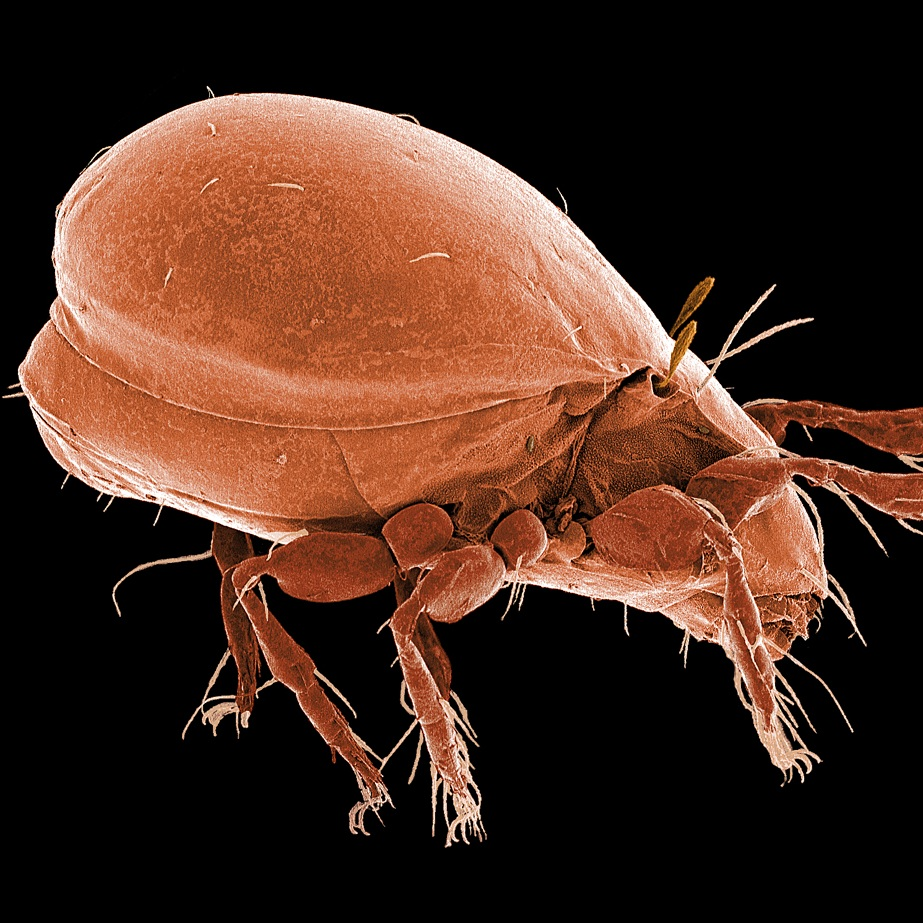
Beneficial Contributions to Ecosystems
Oribatids aren’t just impressive weightlifters—they’re environmental heroes too. These mites actively improve soil quality by aiding seed dispersal, breaking down organic matter, and controlling populations of harmful parasites and insect pathogens. By keeping soils healthy, they indirectly support plant growth, animal health, and even human agriculture.
Slow Growth but Long Evolutionary History
Despite their impressive strength, oribatid mites live life at a leisurely pace. They have low metabolic rates, grow slowly, and take anywhere from a few months to two full years to mature from egg to adulthood. Interestingly, their life cycle is remarkably complex, going through six distinct developmental stages—pre-larval, larval, three pupal stages, and finally adulthood.
And here’s something even more incredible: these tiny mites have likely roamed Earth’s soils for 300 to 400 million years. That means oribatids have outlasted dinosaurs, ice ages, and countless other species, quietly thriving and evolving beneath our feet.
What Can We Learn from Oribatid Mites?
Beyond their awe-inspiring strength and resilience, oribatid mites offer us powerful lessons about adaptation and efficiency. They demonstrate vividly that size doesn’t always correlate with power or importance. Their success in nature results from perfect adaptations to their environment, optimized anatomy, and the efficiency of their muscles.
Video : Oribatid mite (Acari: Cryptostigmata) from soil at Ibaraki Prefecture, Japan
Think about it—what if humans could mimic even a fraction of this efficiency? We’re always looking to build stronger yet lighter materials, more powerful yet smaller machinery. The oribatid mite, tiny as it is, might just provide inspiration for future advancements in technology, engineering, and biomechanics.
Conclusion: Celebrating the Tiny Giant of the Animal World
So, the next time you think about powerful creatures, don’t limit yourself to elephants, gorillas, or lions. Remember the astonishing oribatid mite, a tiny animal no bigger than a grain of sand, capable of lifting unimaginable weight relative to its body size.
These mites remind us vividly that power isn’t always about size or strength that you can easily see. Sometimes, real strength is hidden in the smallest creatures on Earth, patiently living beneath our notice. Isn’t that fascinating? Nature truly never stops surprising us.
From their exceptional strength to their important ecological roles, oribatid mites are remarkable creatures deserving more recognition. Let’s celebrate these tiny yet powerful champions that teach us valuable lessons about strength, efficiency, and adaptation.
Next time you stroll through a forest, take a moment to consider the microscopic miracles happening beneath your feet—you just might be walking above the strongest animals on the planet!
My Greedy In-Laws Tried to Get Rid of Our Sick Mom, but She Brilliantly Taught Them a Lesson
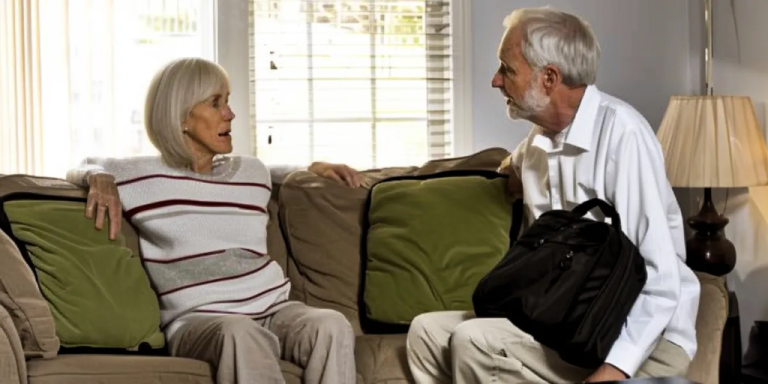
When Lexie’s husband’s parents are left to give up their home due to losing their jobs, they are left stranded. Seeing her husband’s distress at being unable to help, Lexie allows her mother to welcome them to stay with her. Things start off okay, but then the tables start to turn. Instead of being grateful, they start to complain about everything, resulting in a call to social services.
Not long after Cameron and I got married, his parents were faced with unfortunate circumstances. His mom, Jessica, and dad, Roger had no choice but to give up their home because Roger had lost his job.

An elderly couple sitting on a bench | Source: Unsplash
Cameron and I didn’t have the space to take them in. But they were desperate, and so were we. We couldn’t let them just try and figure it out for themselves.
When they realized that my mother lives alone, they asked her to let them move in with her. My mom had a double-story house, but due to being wheelchair bound since a car accident a few years ago, she had a live-in nurse to care for her.

A broken windshield | Source: Pexels
“Please, Tanya,” my mother-in-law said when we were all at my mother’s house for dinner. “We don’t have anywhere else to go. And we don’t have any money available at the moment.”
I knew that this entire thing affected my husband because there was only so much we could do in our own capacity. When my mother agreed, Cameron gripped onto my hand tightly and sighed in relief.
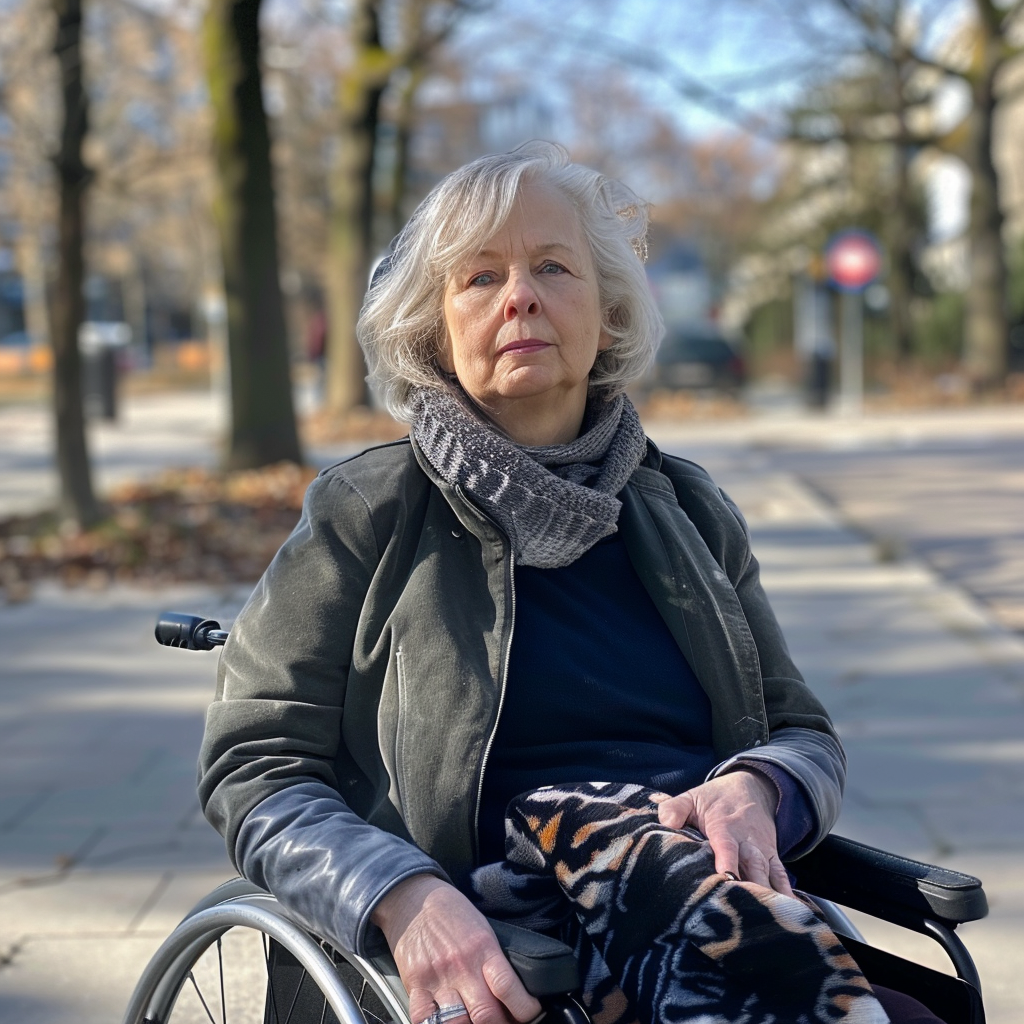
A woman in a wheelchair | Source: Midjourney
“Of course, you can stay here. You can stay for as long as you need to,” my mother told them.
At first, things were okay.
My mother-in-law cooked meals, and my father-in-law mowed the grass and took care of the basic upkeep of the house.

A person cutting oranges | Source: Pexels
But then, things changed and social services got involved. It was a nightmare.
This is what happened.
My in-laws began complaining that my mom was occupying the whole first floor, something that was obvious. Since her accident, my sister and I had converted the first floor into an entire house by itself for my mother.
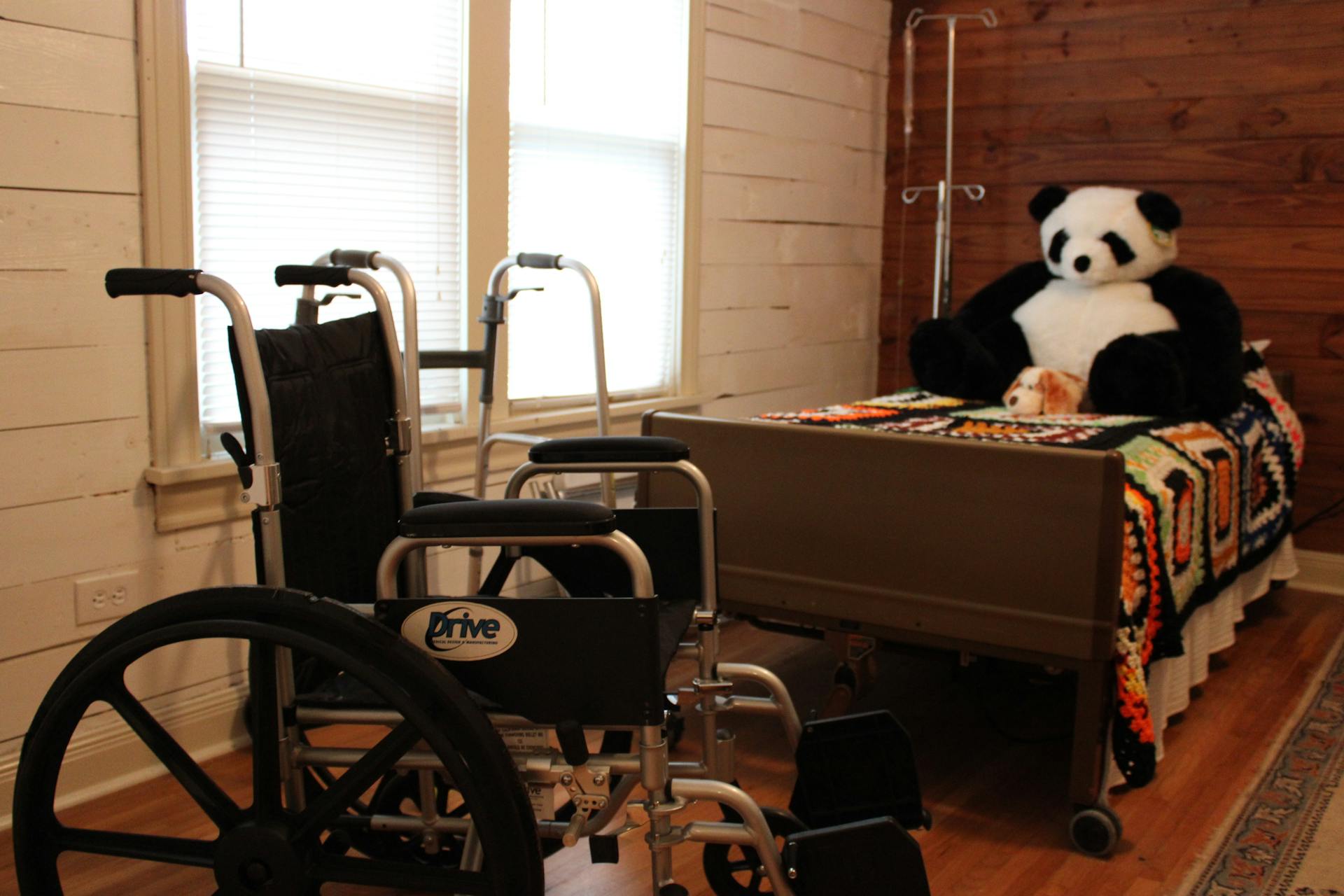
A wheelchair beside a bed | Source: Pexels
She needed her space, and we were going to give it to her. The second floor was for our space when we visited Mom.
Instead of being grateful, my in-laws complained that they couldn’t put their stuff there. They mumbled about the simple food my mother had in her fridge.

An open fridge | Source: Pexels
“It’s such basic foods. There’s nothing new or different here,” Roger would say.
But still, even though they complained, they didn’t try to buy their own food or food that they would have liked to eat on occasion.

An elderly couple shopping | Source: Pexels
Nothing changed when Jessica got a job as head librarian at the local library or when Roger got a job as a proofreader for the local newspaper.
“Don’t you think they should start looking for a new place?” Cameron asked me when we were taking a walk one evening.

An elderly woman in a library | Source: Pexels
“I’m sure your mom cannot wait to have the house back,” he said.
“Actually,” I replied. “I think she enjoys having people there. She always said that it was too quiet with just her and Linda.”
“Yeah, I get that,” he said. “But my parents can be a lot.”

A couple taking a walk | Source: Pexels
It was as if my husband had spoken it into existence.
One day, as I went over to my mother’s house with pastries, I found her looking upset.
“What’s wrong?” I asked her immediately.

Pastries in a box | Source: Pexels
“Cameron’s parents,” she began slowly. “They’ve been hinting about a nursing home for me. I heard them talk about it last night, too.”
“Mom, do you want me to ask them to leave? They’re crossing the line,” I said, worried about her well-being.

A woman holding her face | Source: Unsplash
“Oh, honey,” she said, a mysterious smile forming on her face. “I’ll take care of everything, don’t you worry.”
A few days later, my mother-in-law called us crying.
“How could Tanya do that to us?” she asked.

A crying old woman | Source: Pexels
Apparently, my mother had told them to pack their things and move to the first floor because she was ready to move into a nursing home. She said that she needed the help and that she wanted to live a little easier.
Cameron’s parents thought that they had won the battle they created.

A healthcare facility | Source: Unsplash
Instead, my mother had called social services, telling them that she had two individuals who were living with her temporarily but needed the help.
The next day, people from social services arrived at my mother’s doorstep, ready to take Jessica and Roger away to their social housing facilities.

A person holding a phone | Source: Pexels
They were livid.
Cameron and I met them at my mother’s house because they demanded an audience.
“This is outrageous! We thought we were moving downstairs, not out of the house!” my mother-in-law shrieked.

An angry old woman | Source: Pexels
“How dare she trick us like this! We have done everything for her these past few months,” my father-in-law added.
Beside me, my husband flinched. He was caught in the middle, not knowing what to do or how to react.
“You took advantage of her kindness and tried to push her into a nursing home. You got what you deserved,” I retorted, barely containing my own anger at their words.

An angry old man | Source: Pexels
“You can’t just throw us out like this!” my mother-in-law protested.
“You’ve got a little place to live now,” my mother said, smiling. “But also, that’s not my problem. I helped you out, and you did nothing but complain. You didn’t want to be here. You were just here because you had no choice. Now, you can learn to fend for yourselves.”
Jessica was appalled. I don’t think she expected my mother to retaliate in that way.
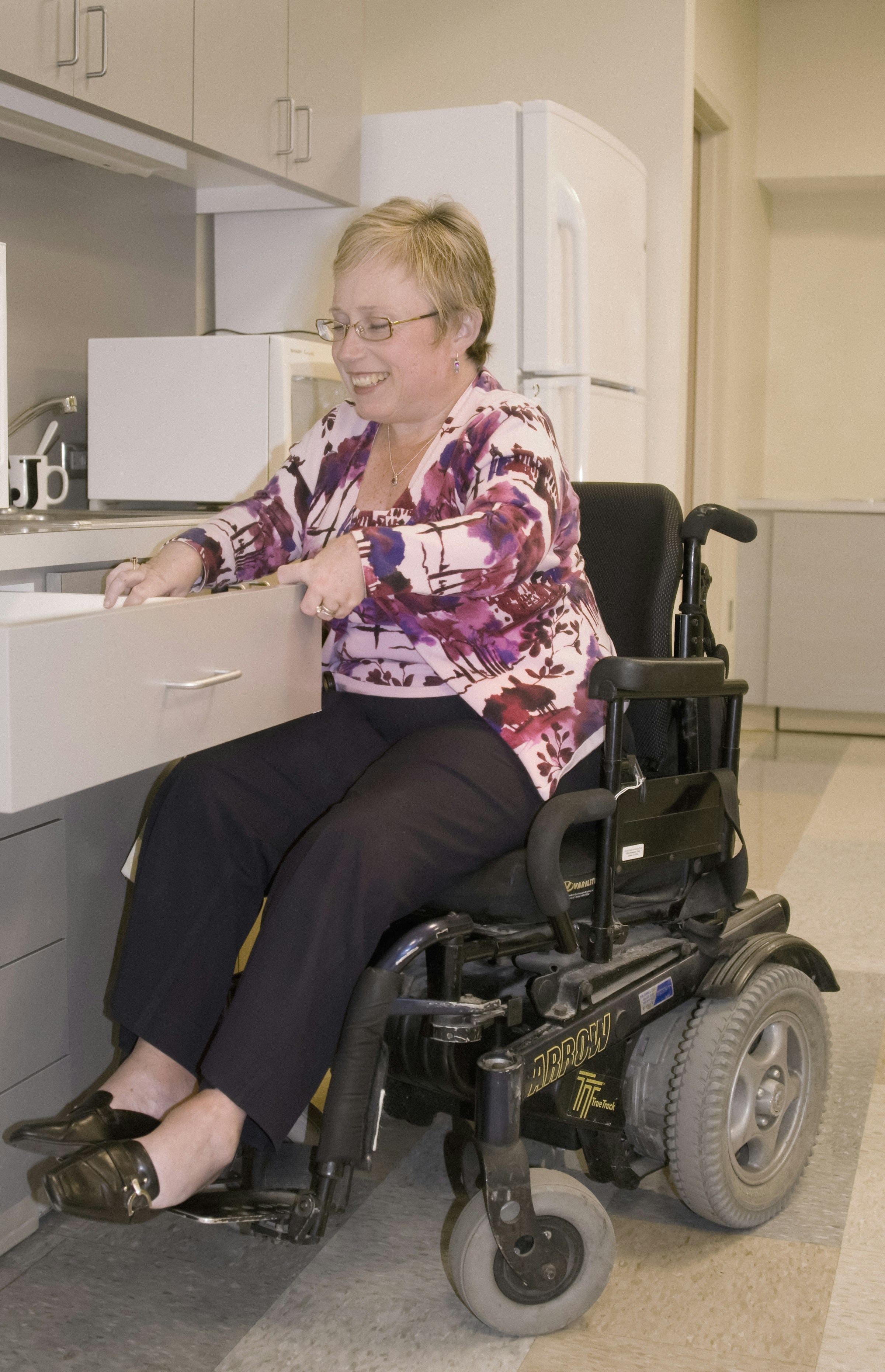
A smiling woman in a wheelchair | Source: Unsplash
It was true, social services housed them in a little apartment which was close to both their jobs. They would be absolutely fine until they chose to move elsewhere.
As they left, they continued to curse, but it was clear that they had been defeated by the whole episode.

A small apartment | Source: Unsplash
“I’m sorry,” my husband told my mother when we settled her down again. “This was all my fault.”
It took a while for my mother to calm him down and make him realize that nothing was his fault.
“Your parents needed a place to stay, and they were welcome to do so here, but they continued to complain. They made life difficult here. Everything was a problem,” she said.

An upset man | Source: Unsplash
I continued to work my way around the kitchen while they spoke. I knew that my husband needed a pick-me-up, so I made his favorite Indian dishes, hoping that it would do the trick.
If I had to admit it, I also felt like it was my fault. I should have objected to the move in the first place. But I knew that my in-laws needed a place to live when they lost their homes. And maybe it was because of guilt.

A plate of food | Source: Unsplash
Guilt born from the mere fact that Cameron and I couldn’t do it ourselves, that we both had allowed them to live with my mother.
As we got into bed that night, I told my husband that we needed to see his parents. We needed to make sure that they were okay, despite their horrible behavior, they needed to know that we still cared.

A couple lying together | Source: Unsplash
The following day, we met them at their new apartment. It was a quaint little place, but it was just enough for the two of them. As we walked in, there were boxes lying everywhere and the smell of burnt toast permeated the air.
“I didn’t check the toaster setting,” Roger said, as his way of explaining.

Opened cardboard boxes | Source: Midjourney
We ended up taking them to a café for lunch, where they admitted to their behavior.
“We were in the wrong,” my mother-in-law said. “We know that now. We saw an easy way to live with Tanya, and we just wanted more. But now, we have to make it work for ourselves.”

An interior of a coffee shop | Source: Unsplash
I dug into my pancakes while Cameron let his parents have a piece of his mind. He went on about how they needed to be responsible for their actions and that nothing would make up for their behavior toward my mother.
“You embarrassed me. And you took advantage of my wife’s mother,” he said. “Do you know how that makes me feel?”

A stack of pancakes | Source: Unsplash
I allowed him to talk his way through it, while his parents continued to eat their eggs benedict in silence.
As we drove home, my husband stopped to get my mother a bouquet of flowers.
“She deserves it,” he said.

A bouquet of flowers | Source: Unsplash
What would you have done?



Leave a Reply